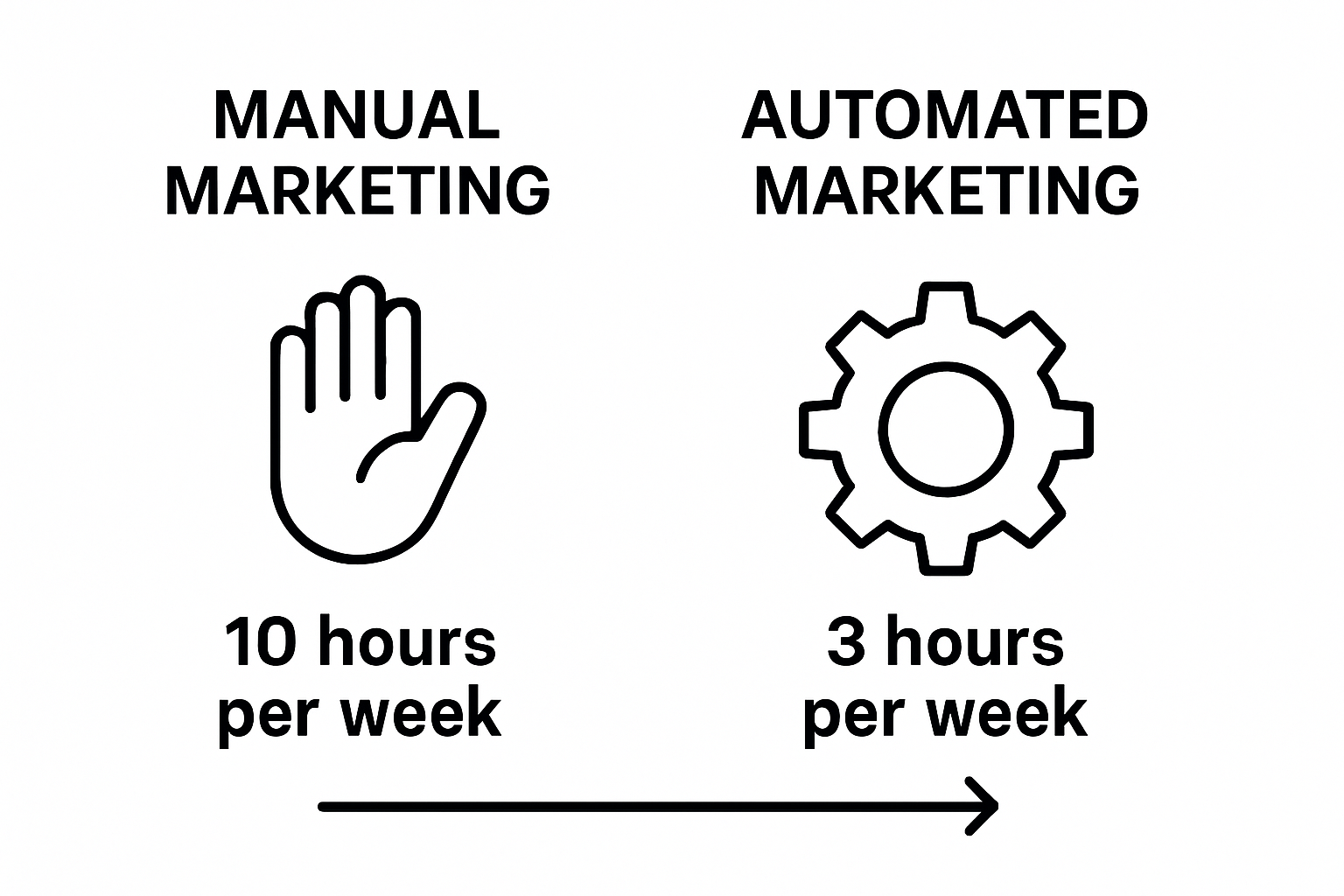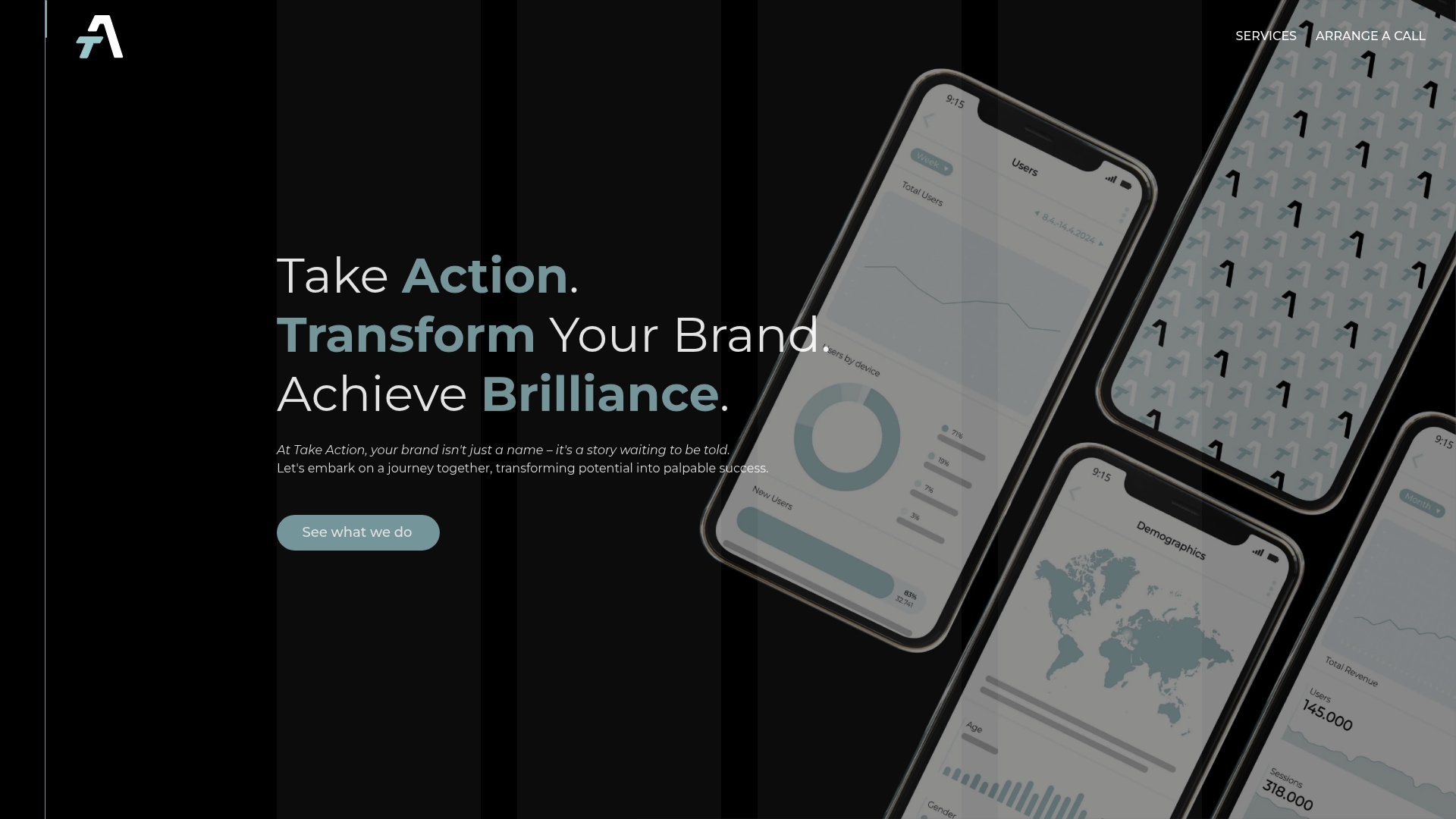Understanding Marketing Automation Basics for Brands
Marketing automation has completely changed how brands connect with people online. Companies using this tech now reach millions with tailored messages and automated campaigns that run 24 hours a day. But most brands overlook one critical fact. Marketing automation platforms can increase qualified leads by up to 451 percent according to industry research. And yet, the biggest surprise is that its real strength is not just in saving time. It is in building deeper, smarter relationships with every single customer. This flips the old idea of impersonal automation on its head.
Table of Contents
- What Is Marketing Automation And Why It Matters
- Key Components Of Marketing Automation Systems
- How Marketing Automation Enhances Customer Retention
- The Role Of Data In Marketing Automation
- Best Practices For Implementing Marketing Automation
Quick Summary
| Takeaway | Explanation |
|---|---|
| Leverage marketing automation for efficiency | Automating marketing tasks enhances productivity and allows brands to focus on strategy. |
| Utilize data to understand customer behavior | Integrating data can create detailed customer profiles that inform targeted marketing efforts. |
| Implement segmented communication strategies | Personalization through audience segmentation fosters deeper connections and increases engagement rates. |
| Design dynamic workflows for customer journeys | Effective marketing automation requires mapping customer interactions and creating flexible engagement paths. |
| Focus on measurable goals for success | Establishing clear objectives aligned with business strategies ensures successful marketing automation implementation. |
What is Marketing Automation and Why It Matters
Marketing automation represents a powerful technological approach that enables brands to streamline, automate, and measure marketing tasks and workflows. By leveraging sophisticated software platforms, businesses can more efficiently engage customers, personalize interactions, and drive strategic growth without manual intervention.
Understanding the Core Mechanics
At its fundamental level, marketing automation transforms repetitive marketing processes into intelligent, data driven systems. Imagine having a digital assistant that automatically sends personalized emails, tracks customer behaviors, segments audiences, and triggers targeted communications based on specific user actions. This technological solution moves beyond traditional batch marketing approaches by creating dynamic, responsive customer journeys.

The core mechanics involve integrating multiple data sources to create comprehensive customer profiles. These profiles enable brands to understand individual preferences, purchase history, and engagement patterns. Learn more about personalized email strategies that can dramatically enhance customer retention and conversion rates.
Strategic Impact on Business Performance
According to research published on ResearchGate, marketing automation positively influences firm performance by delivering substantial benefits:
- Enhanced Customer Targeting: Precisely segment audiences based on intricate behavioral data
- Improved Operational Efficiency: Reduce manual marketing tasks and reallocate human resources
- Increased Revenue Potential: Create more personalized, timely interactions that drive conversions
By transforming marketing from a one size fits all approach to a nuanced, data driven strategy, brands can create more meaningful connections with their audience. Marketing automation is not just a technological tool but a comprehensive approach to understanding and engaging customers with unprecedented precision and relevance.
Key Components of Marketing Automation Systems
Marketing automation systems are complex technological ecosystems comprising multiple interconnected components that work together to transform how brands engage with customers. These sophisticated platforms integrate advanced technologies to create seamless, intelligent marketing workflows that adapt and respond to customer behaviors in real time.
Core Technical Infrastructure
The foundation of marketing automation systems rests on robust data management and integration capabilities. These systems require comprehensive platforms that can collect, process, and analyze customer data from multiple sources such as websites, email interactions, social media platforms, and purchase histories. Explore ways to increase online sales through strategic automation and understand how integrated data drives business growth.
Key technical components include:
- Customer Data Platform (CDP): Centralized repository for aggregating and organizing customer information
- Integration APIs: Connectors that enable seamless communication between different marketing and business software
- Machine Learning Algorithms: Advanced computational models that predict customer behaviors and preferences
Functional Modules and Workflow Capabilities
Marketing automation systems are not monolithic but comprise multiple specialized modules designed to address specific marketing functions. These modules work in concert to create comprehensive, adaptive marketing strategies. According to industry research, the most critical functional components include:
- Segmentation Engine: Enables precise audience categorization based on multidimensional criteria
- Campaign Management Tools: Design, execute, and track sophisticated multi channel marketing campaigns
- Personalization Frameworks: Generate dynamically tailored content and communication experiences
The true power of marketing automation lies not just in individual component capabilities but in their seamless integration and intelligent interaction.
Below is a feature table summarizing the core technical infrastructure and functional modules that constitute a typical marketing automation system, supporting clarity on how each part contributes to overall performance.
| Component / Module | Purpose / Function |
|---|---|
| Customer Data Platform (CDP) | Aggregates and organizes customer information from multiple sources |
| Integration APIs | Connect different marketing and business tools for seamless data flow |
| Machine Learning Algorithms | Predict customer behaviors, preferences, and automate decision-making |
| Segmentation Engine | Categorizes audiences using multidimensional data for precise targeting |
| Campaign Management Tools | Design, execute, and track complex, multi-channel marketing campaigns |
| Personalization Frameworks | Deliver dynamically tailored content and individualized communication experiences |
By creating a unified ecosystem that continuously learns and adapts, brands can transform marketing from a static, broadcast model to a responsive, customer centric approach that anticipates and meets individual customer needs with unprecedented precision.
How Marketing Automation Enhances Customer Retention
Customer retention represents a critical strategic objective for brands, and marketing automation provides sophisticated mechanisms to transform sporadic interactions into sustained, meaningful relationships. By leveraging data intelligence and personalized communication strategies, businesses can create more engaging, responsive customer experiences that dramatically reduce churn and increase lifetime value.
Predictive Customer Engagement
Marketing automation enables brands to anticipate customer needs before they become apparent. Through advanced behavioral tracking and machine learning algorithms, companies can identify potential disengagement signals and proactively intervene. Learn more about our email marketing and retention strategies to understand how predictive insights can transform customer relationships.
Key predictive engagement strategies include:
- Early Warning Detection: Identifying subtle behavioral changes indicating potential customer disinterest
- Personalized Intervention Workflows: Automatically triggering tailored communication sequences
- Dynamic Content Adaptation: Adjusting messaging based on real time customer interaction patterns
Personalization at Scale
According to research exploring marketing automation’s impact on customer retention, personalized communication dramatically increases customer loyalty. Marketing automation transforms generic interactions into highly contextual experiences by:
- Segmenting Audiences: Creating microsegments based on nuanced behavioral and demographic data
- Contextual Messaging: Delivering precisely timed and relevantly themed communications
- Adaptive Communication Channels: Selecting optimal engagement platforms for individual customers
By treating each customer as a unique individual with specific preferences and needs, brands can create deeper, more meaningful connections that transcend traditional transactional relationships.
This table summarizes key marketing automation strategies that enhance customer retention, grouping tactics by approach and illustrating their benefit to both brands and customers.
| Strategy | Tactic | Benefit to Brands | Benefit to Customers |
|---|---|---|---|
| Predictive Engagement | Early Warning Detection | Reduces churn through proactive intervention | Receives timely, relevant messaging |
| Predictive Engagement | Personalized Intervention Workflows | Increases engagement and conversion | Benefits from content tailored to needs |
| Predictive Engagement | Dynamic Content Adaptation | Optimizes communication for higher effectiveness | Improves relevance of each interaction |
| Personalization at Scale | Segmenting Audiences | Enables granular targeting and refined messaging | Experiences offers that match interests |
| Personalization at Scale | Contextual Messaging | Boosts loyalty through context-aware content | Receives timely information |
| Personalization at Scale | Adaptive Communication Channels | Maximizes outreach effectiveness | Engaged through preferred platforms |
 Marketing automation provides the technological infrastructure to execute this vision of hyper personalized, responsive customer engagement.
Marketing automation provides the technological infrastructure to execute this vision of hyper personalized, responsive customer engagement.
The Role of Data in Marketing Automation
Data serves as the fundamental cornerstone of modern marketing automation, transforming raw information into strategic intelligence that drives sophisticated customer engagement. By capturing, analyzing, and interpreting complex behavioral signals, brands can create increasingly precise and personalized marketing experiences that resonate deeply with individual customer needs.
Data Collection and Integration
Successful marketing automation depends on comprehensive data aggregation from multiple touchpoints. This includes tracking digital interactions across websites, social media platforms, email engagements, purchase histories, and customer service interactions. Learn more about advanced marketing strategies to understand how integrated data powers intelligent marketing approaches.
Key data collection strategies include:
- Multichannel Tracking: Capturing interactions across diverse digital platforms
- Real Time Data Synchronization: Ensuring immediate updates across marketing systems
- Consent Based Data Collection: Maintaining transparent and ethical data gathering practices
Transforming Data into Strategic Insights
According to research exploring data’s role in marketing technologies, data transcends mere information collection and becomes a strategic asset for predictive marketing. By applying advanced analytical techniques, brands can:
- Predict Customer Behaviors: Anticipate potential actions and preferences
- Develop Granular Segmentation: Create microsegments based on nuanced behavioral patterns
- Generate Personalized Recommendations: Craft precisely targeted marketing communications
The true power of data in marketing automation lies not just in its collection but in its intelligent interpretation. By transforming complex datasets into actionable insights, brands can create marketing strategies that feel uniquely tailored to each individual customer, moving beyond generic communications toward genuinely personalized experiences.
Best Practices for Implementing Marketing Automation
Implementing marketing automation requires a strategic approach that balances technological capabilities with nuanced human insights. Successful deployment goes beyond simply purchasing software and demands a comprehensive understanding of organizational goals, customer behaviors, and technological integration.
Strategic Planning and Goal Setting
Before launching any marketing automation initiative, brands must develop a clear, measurable framework for success. This involves defining specific objectives that align with broader business strategies. Explore comprehensive marketing growth strategies to understand how strategic planning drives meaningful technological implementation.
Key strategic planning considerations include:
- Precise Objective Definition: Establishing clear, measurable marketing automation goals
- Cross Departmental Alignment: Ensuring marketing, sales, and technology teams collaborate effectively
- Scalability Assessment: Selecting tools that can grow with organizational complexity
Workflow Design and Customer Journey Mapping
According to research on marketing automation implementation, the most successful automation strategies prioritize intricate customer journey mapping. This involves:
- Comprehensive Touchpoint Analysis: Identifying all potential customer interaction points
- Dynamic Workflow Creation: Designing flexible communication pathways
- Personalization Strategies: Developing context aware engagement sequences
Effective marketing automation transcends technological implementation. It represents a holistic approach to understanding customer behaviors, creating intelligent communication frameworks, and delivering personalized experiences that feel both sophisticated and genuinely human. By combining technological precision with strategic insight, brands can transform automated interactions into meaningful, relationship building moments.
Ready to Transform Your Email Marketing with Automation?
Struggling to move beyond manual campaigns and make automation a genuine growth engine? The article dives deep into the basics of marketing automation for brands, highlighting pain points such as repetitive processes, missed engagement opportunities, and challenges in personalizing at scale. Many brands want the precision of data-driven journeys and smart segmentation but lack the tools or know-how to put advanced solutions into practice. You do not have to settle for average engagement or risk lost revenue from abandoned carts and stagnant lists.

At Take Action, we connect the educational insights you just learned with proven, real-world solutions. Our team specializes in email marketing and retention strategies that monetize customer data, automate journeys through Klaviyo, and turn your emails into a consistent revenue stream. See what happens when you pair AI-backed automation with human expertise. Take the next step today and discover how you can elevate retention, recover lost sales, and build lasting customer relationships. Visit Take Action now for a free consultation and unlock the full power of intelligent marketing automation for your brand.
Frequently Asked Questions
What is marketing automation?
Marketing automation refers to the use of technology to streamline, automate, and measure marketing tasks and workflows, allowing brands to engage customers and personalize interactions efficiently.
How can marketing automation improve customer retention?
Marketing automation enhances customer retention by allowing brands to anticipate customer needs, deliver personalized content, and engage customers through adaptive communication strategies, which fosters meaningful relationships.
What key components are involved in marketing automation systems?
Key components of marketing automation systems include a Customer Data Platform (CDP) for data aggregation, integration APIs for seamless communication, and machine learning algorithms for predicting customer behaviors.
What are some best practices for implementing marketing automation?
Best practices for implementing marketing automation include strategic planning and goal setting to define clear objectives, workflow design that maps customer journeys, and ensuring cross-departmental alignment for effective collaboration.
